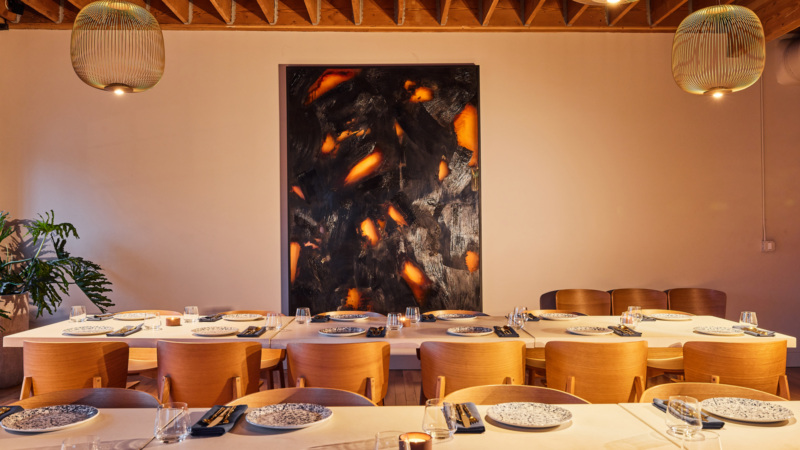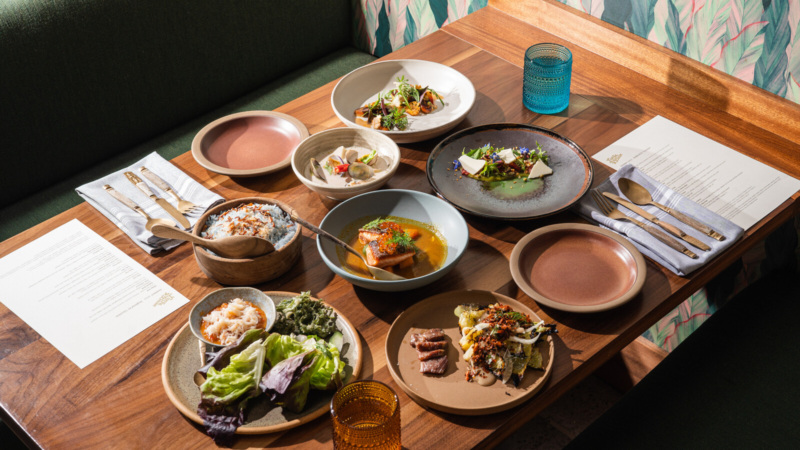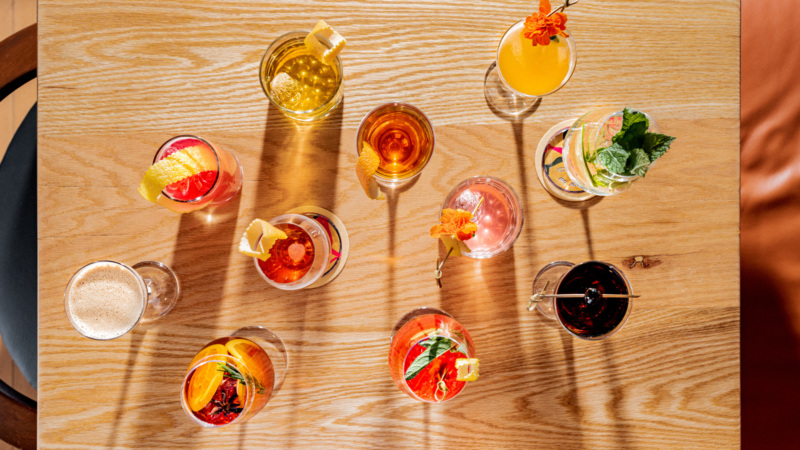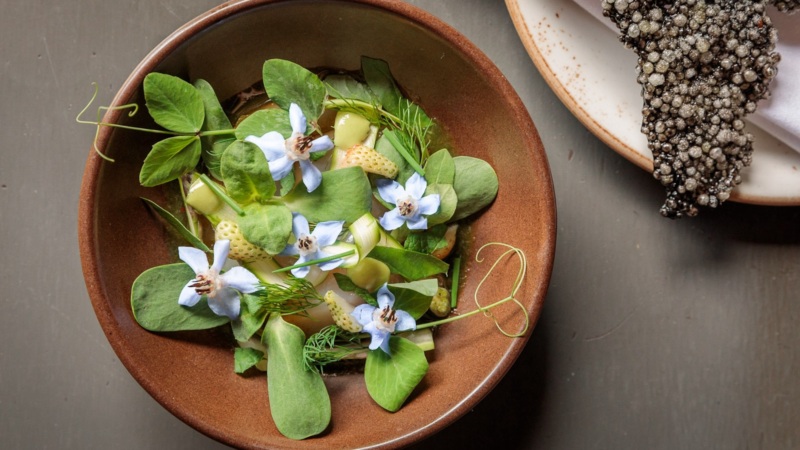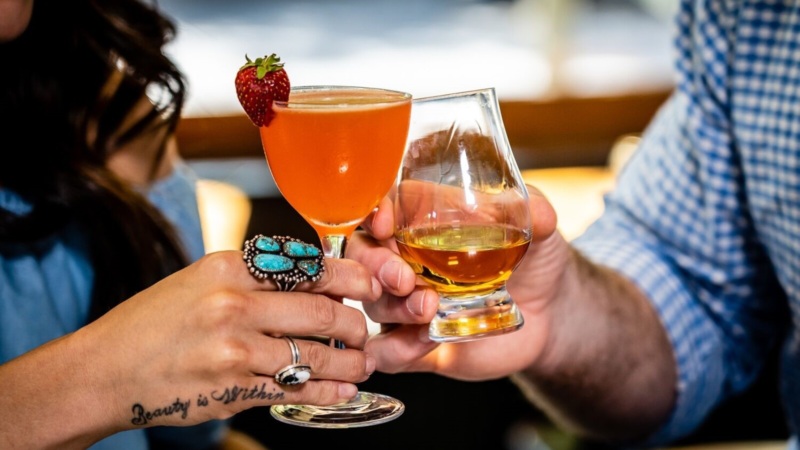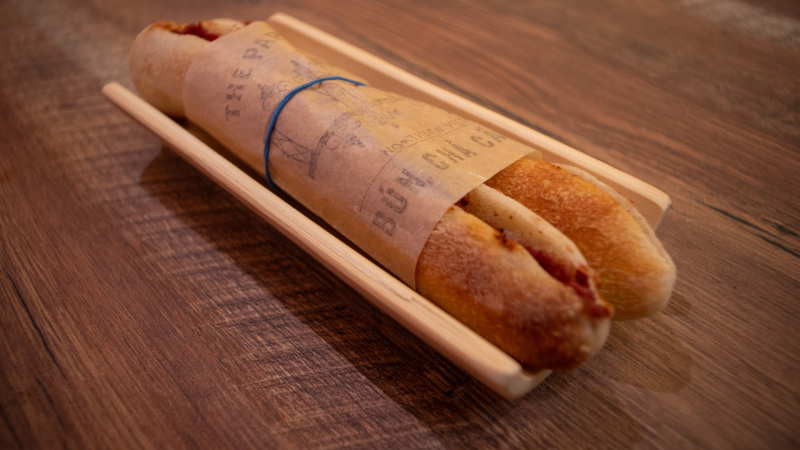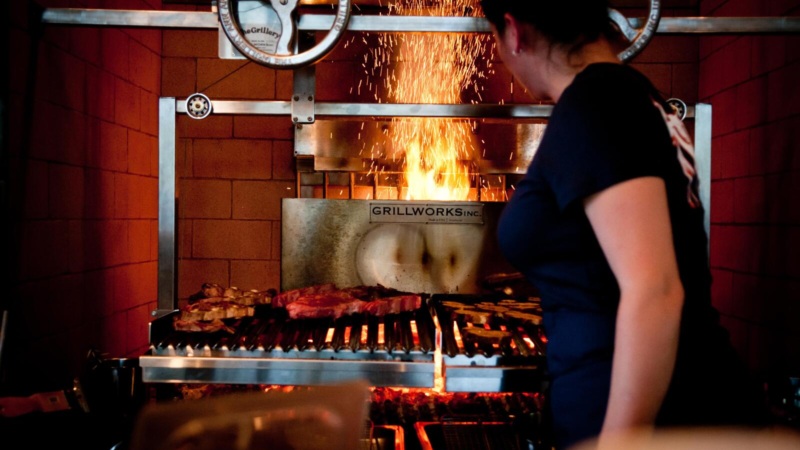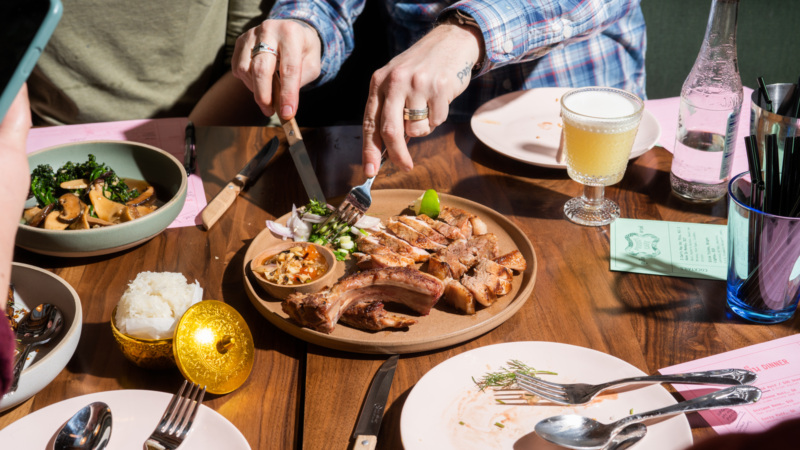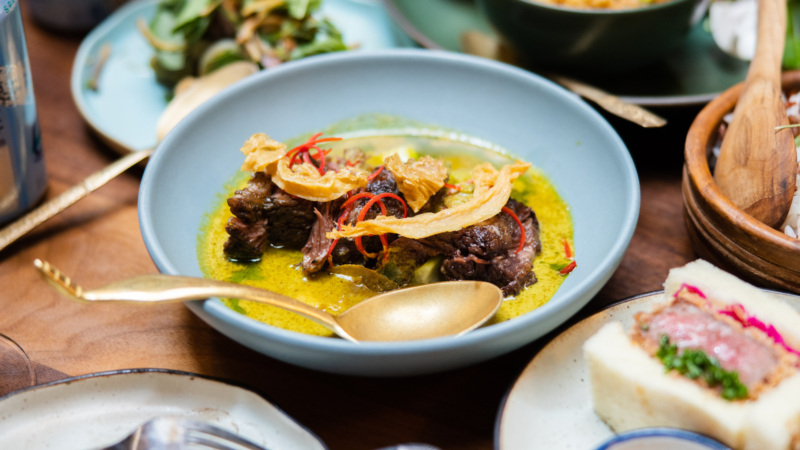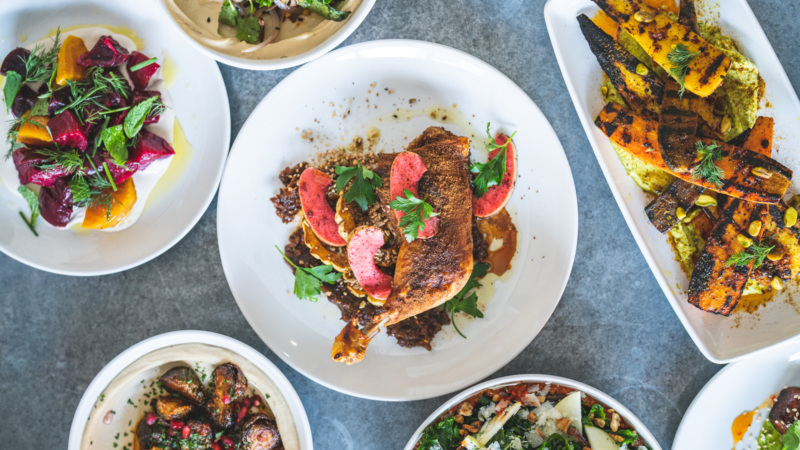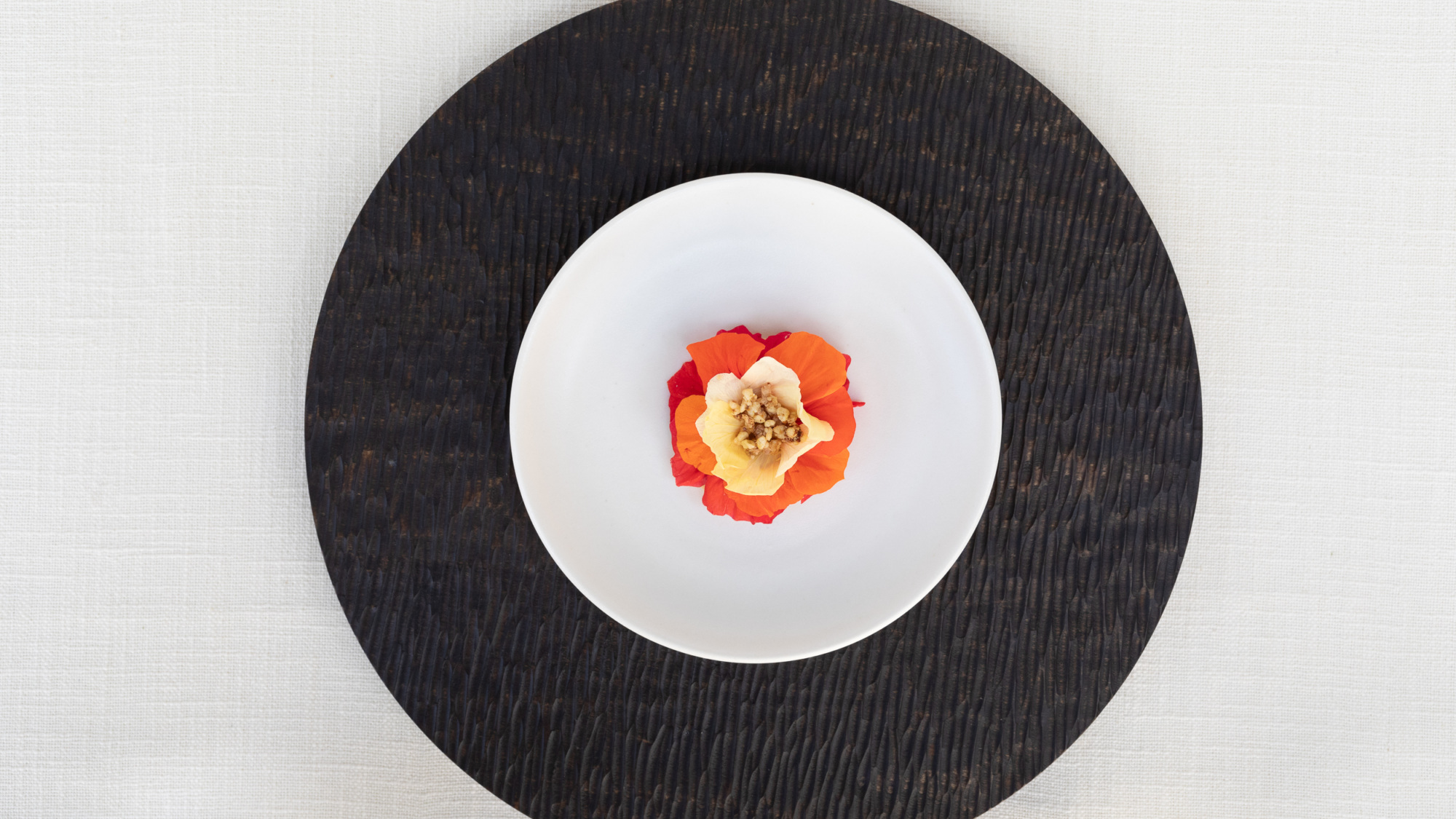
Five Dishes to Love on ōkta’s Vegetable-Forward Summer Tasting Menu
ōkta is an expression of Oregon’s unique ecosystem filtered through chef Matthew Lightner‘s culinary creativity. The restaurant in McMinnville’s boutique Tributary Hotel opened in 2022, with its own regenerative farm located 10 miles away, where wood-fired bread is baked fresh daily and where Lightner and his team experiment with ferments and preserves in the larder, transforming fresh ingredients so that they have a broad palette of flavors to draw from in the kitchen, even in the depths of winter.
You might know Lightner from his time at Atera in New York City, where he earned two Michelin stars. However, he first gained national attention as the chef of Castagna in Portland, and it’s fitting to see him return to Oregon, a place that he says has always felt like home for him, and where he wants to raise his family, with access to nature and high quality, organic food.
“Summer is when the farm is at its peak,” Lightner says. The abundance of produce inspires his vegetable-forward menu at this time of year — and summer is definitely the best time of year to dine if you are vegetarian or vegan. Each dish captures the season with bright flavors and intricate concinnity.
Here are five snapshots from the 10-course menu, as described by Lightner.
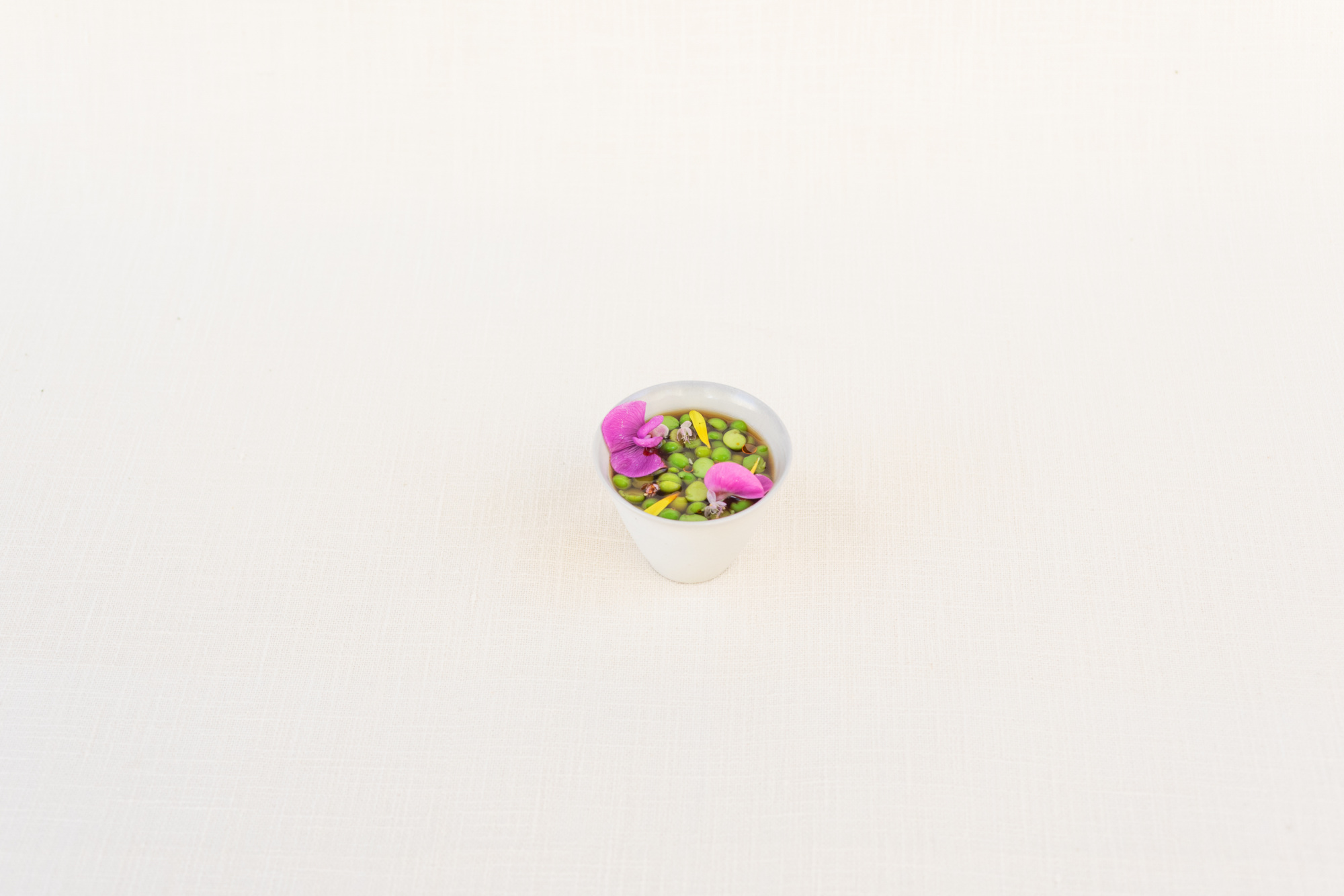
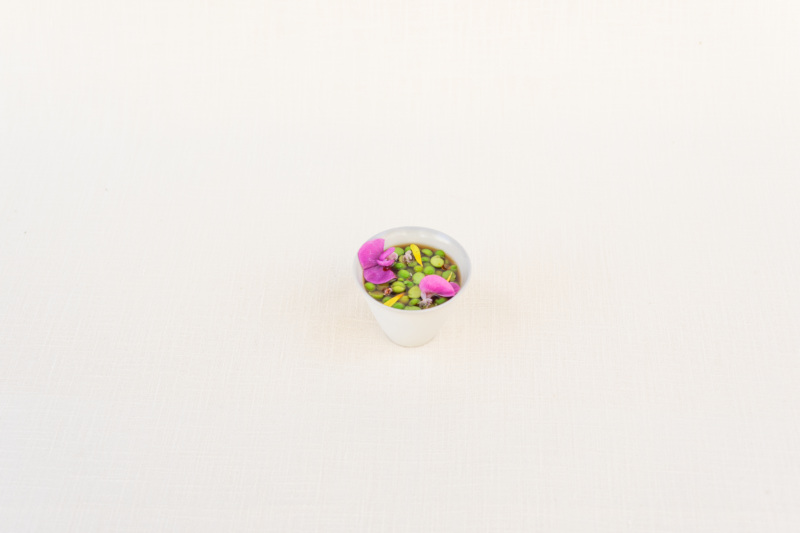
Friendship
“When we first started farming two years ago, chrysanthemum was the only thing that had really good yields. We took the leaves, dried them like matcha powder, and we made an oil that was super fragrant. Chrysanthemum symbolizes friendship and I find it interesting that it’s one of our first plantings that did really well, like the ground and earth were saying, “let’s be friends and let’s figure this out together.” That’s my interpretation of it. We were able to utilize chrysanthemum in so many different ways. I really wanted to capture that story of our farm in an opening bite.
“We make steeped tea with dried chrysanthemum petals and buds – they almost have an artichoke flavor. Then we add milk, cream, eggs, steam it, and set it. We put the lightly grilled peas on top and dress it with the maple blossom amazake. I love peas with honey and olive oil, and I started thinking of chrysanthemum having those olive oil-type notes and the maple giving those honey aromas and flavors.
“This dish is served in a ceramic bowl by Lilith Rockett, who makes most of our plateware. We’ve been working together since I was at Atera in New York and we share a similar aesthetic and similar philosophies. Lilith has a studio in Portland and I go to her studio often to see and touch things. We have a very fluid relationship.”
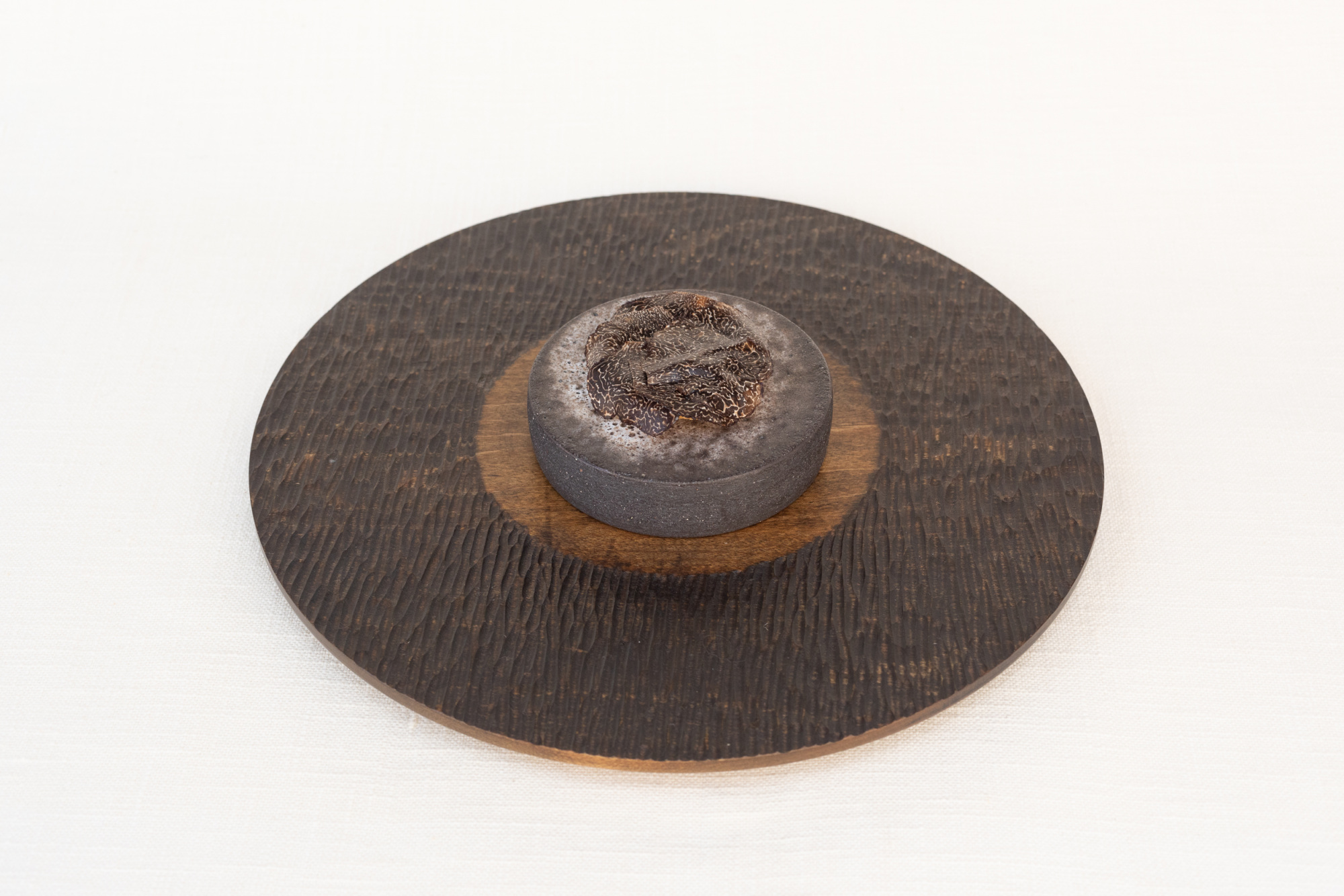
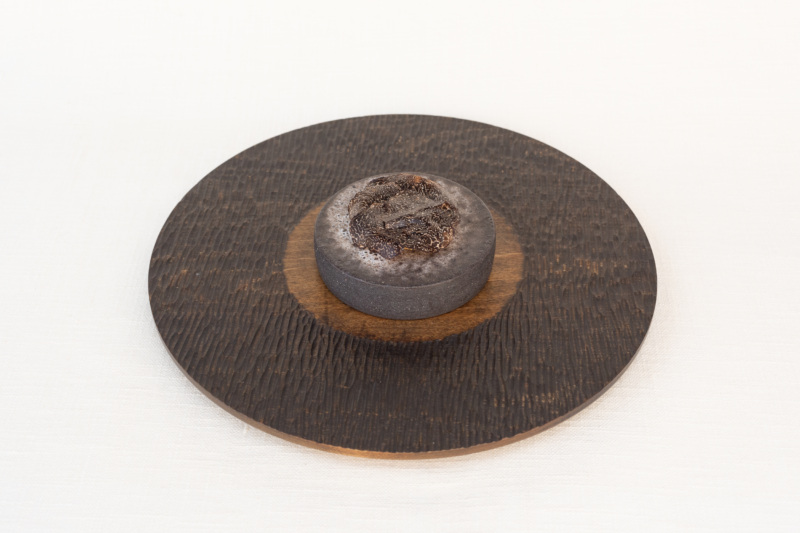
Soil
“We were really inspired by Georgia O’Keeffe and how she turns nature into abstract concepts, and “Soil” is an example of this. Our soil at the farm was covered with thistles and there’s a ton of marine sediment, which is why pinot noir grows really well around here. We wanted to have a bite that encapsulated our terroir and celebrates that, because those aromas and flavors are what make all the other magical things happen. The artichoke mousse is reminiscent of the thistle and the braised kombu brings in that salty marine umami. We also like to partake in our global food scene, and for this dish, the truffles are coming from western Australia and the kombu is from Japan. The artichokes are from the coast of Oregon. We didn’t want to do a traditional tart shell, so we made a feuille de brick — thinly brushed tart dough that is sturdy, crispy, but delicate.”
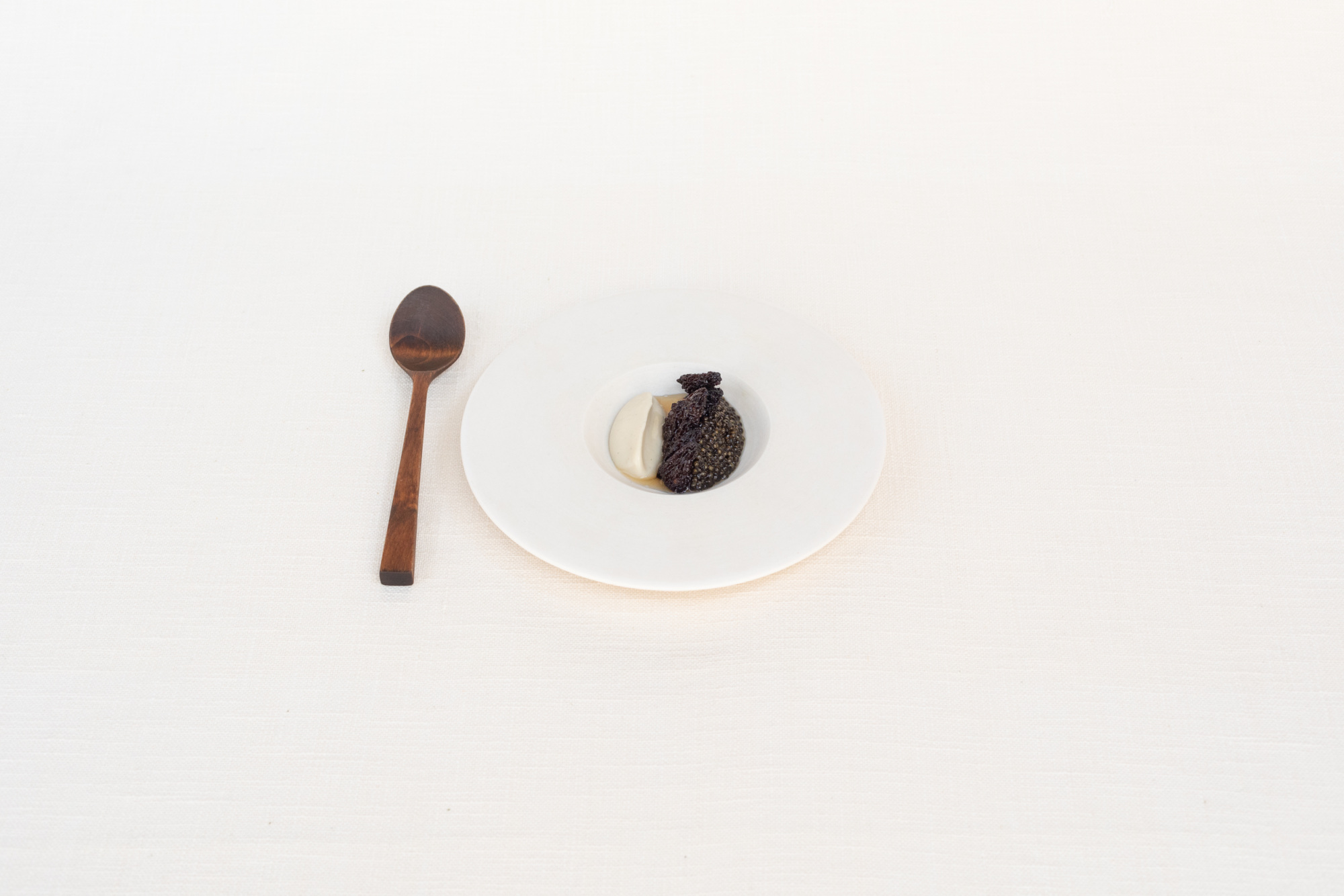
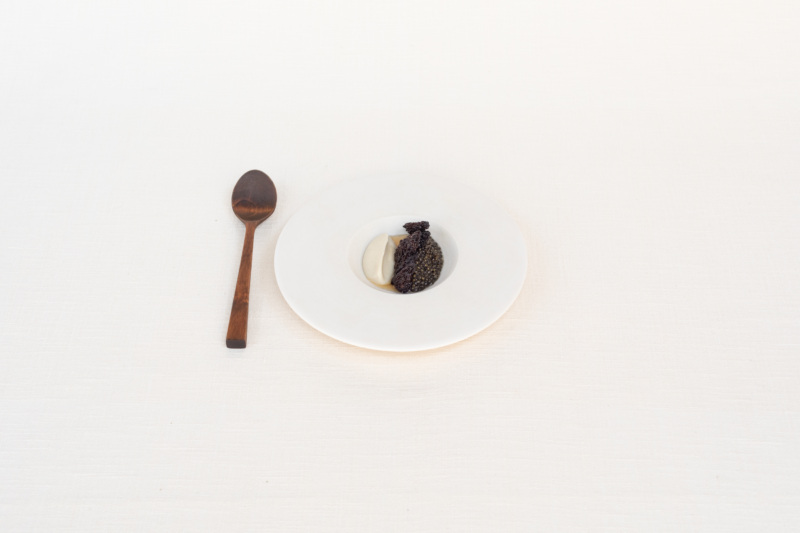
Shifting
“Burn morels are a natural occurrence after forest fires. These are some of the most prized mushrooms in the Pacific Northwest and they happen in areas where there was fire and destruction. As the forest starts to regenerate, morels are some of the very first species to thrive in that situation.
“As we think about climate change and how we are interacting with nature, and understanding destruction and control and how the natural world works, it is a really important reminder. The Kalapuya used to farm the land with controlled burns. They would burn to propagate seeds, or to clear, or to break down some of the biomass that was there. It really starts to fertilize and bring these different levels of amendments to the soil. It’s an ancient technique that is rooted in a holistic view, while more conventional farming uses tilling and chemicals instead. At the heart of farming is really trying to understand that sometimes when things change and shift, there is also good that comes from that.
“For the caviar, we use California Caviar Company from the Sacramento Delta and they use these strains of sturgeon that used to be in abundance in the Columbia River Gorge Basin so I thought that was a great connection for us to the product. The caviar and morels cooked in amazake are served with laminated brioche by our amazing baker, Haley. If you’re going to serve caviar and there’s that richness and creaminess, you want to live up to that level of creaminess but without it being too heavy or dense. We felt like laminated brioche was the best move for something flaky and delicate.”

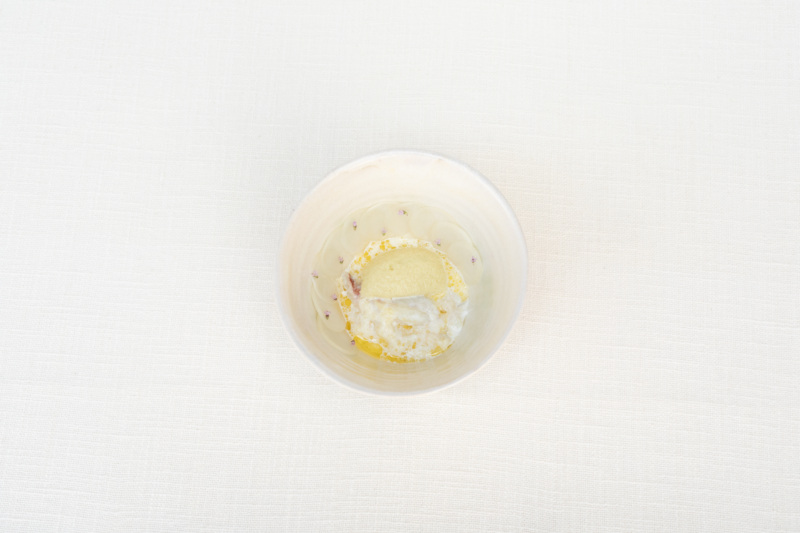
Marine Layer
“Hakurei turnips from our farm do really well under the thick blanketed cloud cover and marine layer that sits right above the ridge. This dish is a play on color and textures and flavors meant to showcase these turnips. We steam them in a magnolia liquid shio koji and the Dungeness crab butter is really like a crab dressing to eat the turnips with. We work directly with fishermen, so we get the crab the day that they are caught. We use the whole crab in this dish, serving the sweet, juicy meat with a crab head custard made from cream, green garlic, amazake liquid, and crab brains, perfumed with a little bit of crocus to bring a floral seasonal touch. We finish the dish with tiny little thyme blossoms.”

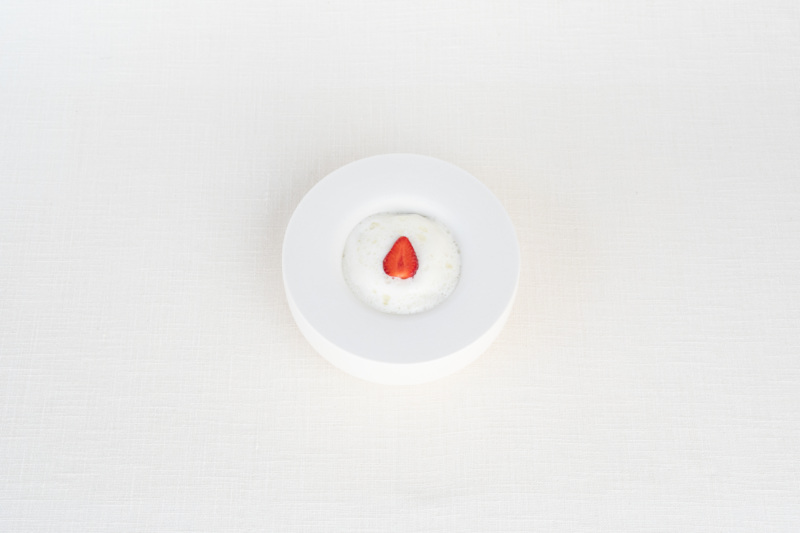
Cloud Cover
“At the farm, we have a lab and larder, where larder chef Larry Nguyen makes misos, shoyus, vinegars, powders, and more to creatively utilize our local products. We’ve aged celery root to this salty, umami, truffle-y type thing, and I had the idea of using this in a dessert.
“It’s an interpretation of strawberries and cream, with these beautiful seasonal strawberries and dragon flowers that have a strawberry essence. I wanted to do a super cloudy aged celery root with fresh strawberries dressed with strawberry soup and lovage oil. We use the Carpigiani Italian ice cream machine, which uses a low and slow churning method to make ice cream. Aged celery root is hard as a rock, so we’ll grate it and steep it. We do an overnight cold infusion, and take the cold infusion and add a little heat to it to let it bloom, then strain it off, chill it back down, and make the ice cream.”



